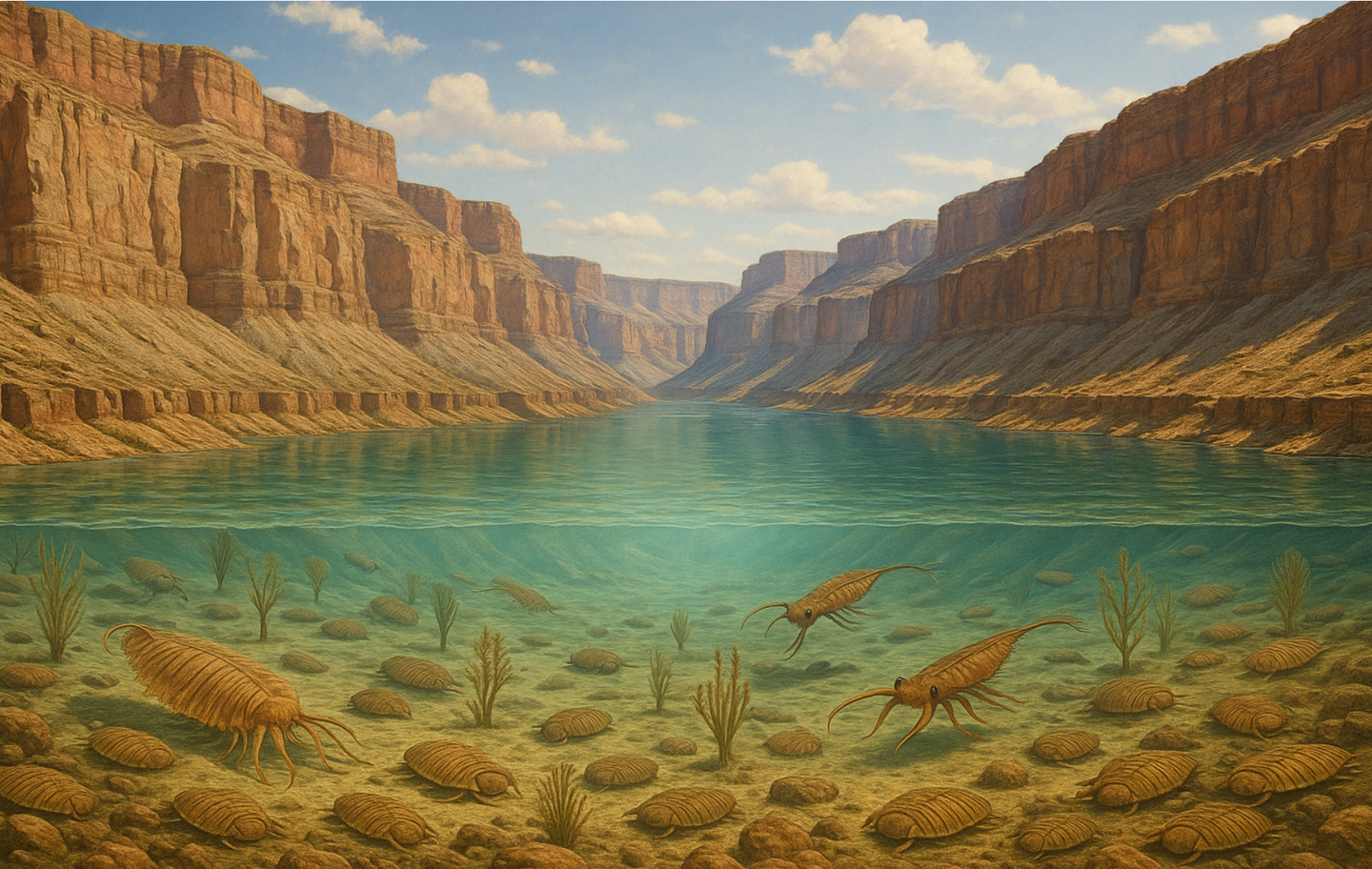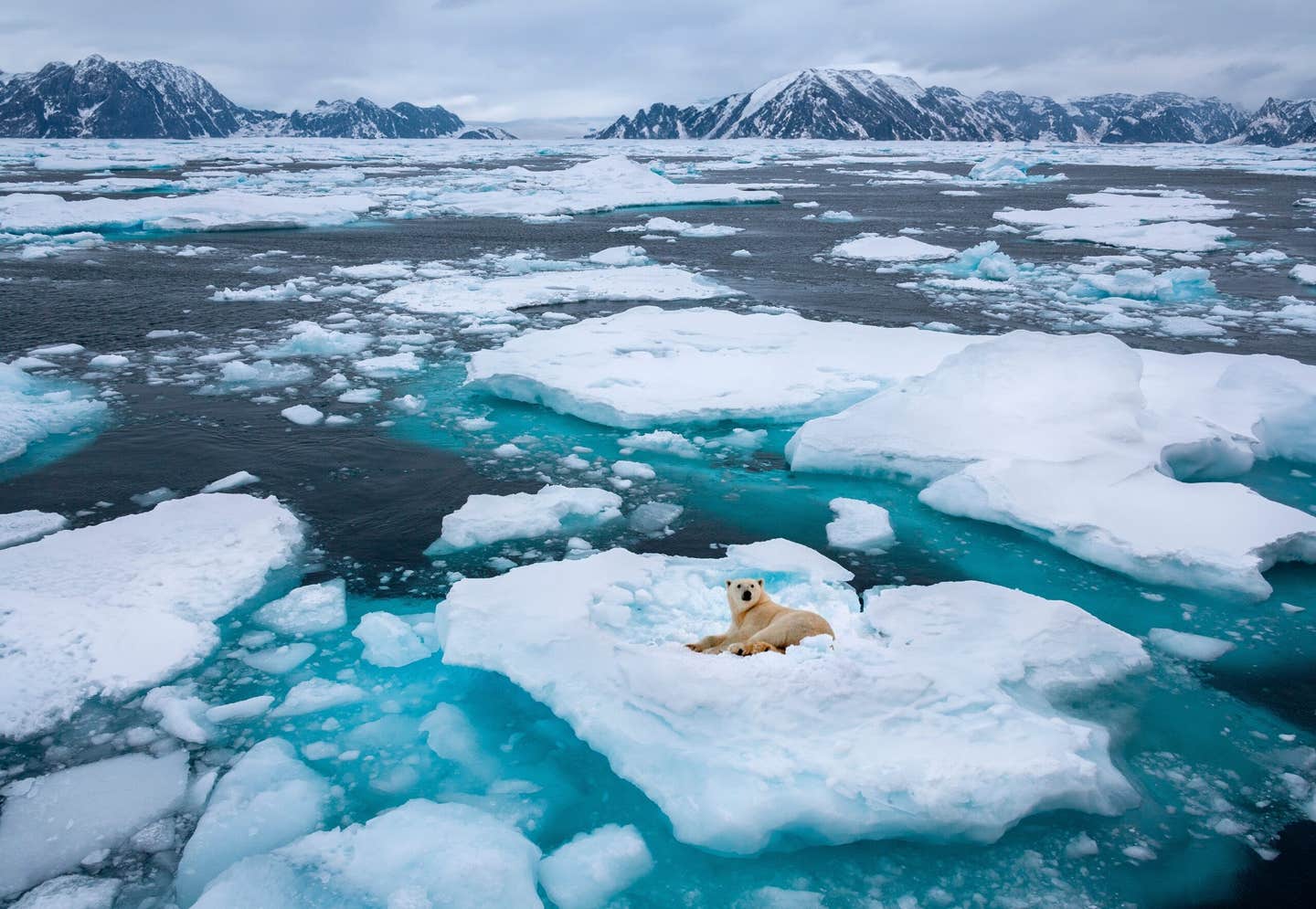Fossil discovery in the Grand Canyon reveals a sea world teeming with strange prehistoric life
More than half a billion years ago, the Grand Canyon was not the arid landscape we know today but a shallow, tropical sea teeming with strange life.

A fossil discovery in the Grand Canyon reveals a thriving Cambrian ecosystem where crustaceans, molluscs, and worms pioneered survival strategies still seen in animals today. (CREDIT: AI Generated / The Brighter Side of News)
More than half a billion years ago, the Grand Canyon was not the arid landscape we know today but a shallow, tropical sea teeming with strange life. Now, scientists have uncovered a remarkable fossil record from this ancient world that is rewriting what we know about early animal evolution.
Researchers from the University of Cambridge, working with U.S. colleagues, found exceptionally preserved fossils in Arizona’s Bright Angel Formation dating back between 507 and 502 million years. The discovery offers a rare glimpse into the Cambrian explosion, the burst of evolutionary creativity when most major animal groups first appeared.
What sets this find apart is not just the age, but the place: a nutrient-rich, oxygen-filled marine environment that supported more complex creatures than the poorly oxygenated settings where most soft-bodied Cambrian fossils have been found.
A Window into the Cambrian Explosion
The Cambrian explosion is often described as life’s “big bang,” when evolution suddenly diversified. While hard-shelled trilobites and other skeletal animals from this period are common, fossils of soft-bodied animals are much rarer. Such remains usually only appear in exceptional deposits known as Konservat-Lagerstätten, like Canada’s Burgess Shale or China’s Maotianshan Shales, where unique conditions allowed fragile tissues to be preserved.
But most of those famous sites represent oxygen-starved seafloors, where decay was slowed but evolutionary innovation may have been stifled. The Grand Canyon fossils, by contrast, come from a “Goldilocks zone” in Earth’s oceans: shallow waters that were rich in nutrients and oxygen, yet calm and protected enough to preserve delicate structures. That balance made it the perfect setting for life to test new evolutionary strategies.
“These rare fossils give us a fuller picture of what life was like during the Cambrian period,” said Giovanni Mussini, a PhD student in Cambridge’s Department of Earth Sciences and lead author of the study published in Science Advances. “By combining these fossils with traces of burrowing, walking, and feeding found across the Grand Canyon, we’re able to piece together an entire ancient ecosystem.”
Related Stories
- Scientists discover massive underwater crater that is 3x larger than the Grand Canyon
- Ancient fossil reveals spiders and their relatives originated in the ocean, not on land
Digging into the Rocks
The discovery began with a 2023 expedition along the Colorado River, which has carved through layers of Earth’s history over the past five to six million years. Mussini and his team collected fist-sized rocks from mud-rich layers that looked promising for fossil preservation.
Back in Cambridge, the rocks were dissolved in hydrofluoric acid, a dangerous but effective method for freeing microscopic fossils. The sediment was sifted through fine sieves, releasing thousands of tiny remains. None of the creatures were preserved whole, but their teeth, shells, and other structures were detailed enough to identify their groups and lifestyles.
The level of preservation was extraordinary. Under high-powered microscopes, researchers could even see plankton-like particles near the mouths of filter-feeding crustaceans—evidence of their last meals, frozen in time for over 500 million years.
Ancient Innovators
The Grand Canyon fossils reveal a diverse community of early animals experimenting with new ways to survive. Crustaceans resembling brine shrimp had molar-like teeth and hairy limbs that swept food into their mouths like conveyor belts. Molluscs with belts of teeth scraped algae from rocks, much like modern snails still do today.
Perhaps the most striking discovery was a new species of priapulid worm, a group nicknamed “cactus worms” or “penis worms.” This unusual creature, named Kraytdraco spectatus after the krayt dragon from Star Wars, had hundreds of branching teeth arranged in rows, forming a complex feeding system unlike anything seen before.
“These were cutting-edge technologies for their time,” Mussini explained. “Animals were integrating multiple anatomical parts into high-powered feeding systems.”
The fossils suggest Cambrian seas were not just home to passive grazers but also to highly specialized eaters, predators, and competitors. This mix of feeding strategies indicates an evolutionary arms race was underway.
An Environment Built for Experimentation
During the Cambrian, the region that would become the Grand Canyon lay near the equator. Its shallow seas offered oxygen-rich waters and an abundance of food sources. The depth was ideal—not too shallow to suffer from waves or intense sunlight, and not too deep to limit oxygen and nutrients.
This balance created what Mussini described as an evolutionary “investment climate.” In resource-rich times, species could afford to develop costly innovations, like new mouthparts or body structures, to outcompete neighbors. “It’s got certain parallels with economics: invest and take risks in times of abundance; save and be conservative in times of scarcity,” he said.
That investment paid off in the long term. The ecological roles pioneered in these seas—filter-feeding, grazing, burrowing, and predation—set the stage for the complex food webs that would dominate marine life for the next 500 million years.
Filling Gaps in the Fossil Record
Until now, most soft-bodied Cambrian fossils came from marginal environments that gave a skewed view of evolution. They captured unusual organisms living at the edges of habitable conditions but missed the bustling ecosystems that shaped long-term evolutionary trends.
The Grand Canyon fossils change that. They show that in favorable settings, animals were already adopting complex behaviors and anatomical innovations usually associated with much later periods. These adaptations helped build the foundation of modern ecosystems.
Scientists call this process “evolutionary escalation,” where species continually raise the bar in defense, feeding, and survival strategies. Unlike zero-sum competition, where one species wins and another loses, escalation can increase the overall complexity of ecosystems. Each new adaptation creates opportunities for others, ratcheting up diversity and interdependence.
The Bright Angel Formation fossils provide some of the clearest evidence yet that escalation began in the Cambrian’s nutrient-rich seas, not just in oxygen-poor margins.
Practical Implications of the Research
This discovery does more than fill a hole in paleontology textbooks. It shows how life adapts when conditions are abundant—a lesson that echoes through ecology today. The Cambrian seas demonstrate that competition and innovation thrive in resource-rich settings, a principle that helps explain patterns seen in modern ecosystems.
The fossils also expand our understanding of how fragile environments can preserve snapshots of deep time. Knowing where to look—fine-grained rocks in stable, oxygen-rich settings—may guide future fossil hunts in places that have been overlooked.
By piecing together how early ecosystems functioned, scientists can better understand the origins of biodiversity and resilience. This knowledge may also inform how we think about conserving today’s ecosystems under stress, since many modern food webs trace their roots back to innovations first tested in Cambrian seas.
Note: The article above provided above by The Brighter Side of News.
Like these kind of feel good stories? Get The Brighter Side of News' newsletter.



